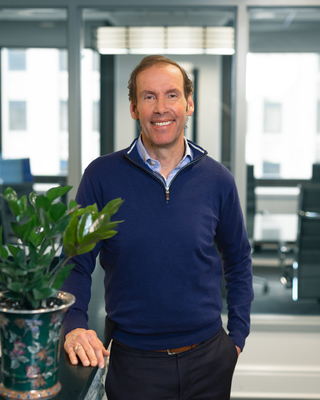A Further Look | Mar 20, 2023
Today’s Volatility Will Provide ‘Sound Money’ for the Future
David B. Root, Jr.CFP®
CFP®

“If you would be wealthy, think of saving as well as getting.” – Benjamin Franklin
If you’re a saver, then low interest rates have been creating a void in your long- term growth strategy for several years. Savers have been losing out for nearly two decades as short-term rates have often failed to keep up with the rising cost of living. Historically low interest rates have been great for mortgages, business financing and consumer borrowing. While low rates have created an attractive environment for equity investors, we have also seen them cause some assets to become artificially inflated.
As interest rates continue to rise, it is shaping up to be a good time for savers who stand to earn more on their fixed income investments. The current environment is also increasingly attractive for equity investors who appreciate the efficacy of stable, established dividend paying companies that have exhibited durable earnings power in volatile periods. Regardless of the types of assets you allocate to—whether fixed income, equities, or alternatives—it is time to pay attention to the bond-market’s inverted yield curve, an occurrence that has historically portended a recession.
As I write this (3/13) Silicon Valley Bank (SIVB) has failed and gone into receivership. The factors that doomed SIVB do not seem systemic, but rather idiosyncratic. Importantly, the assets currently supporting balance sheets across the banking system bear no resemblance to the mortgage-backed refuse that littered balance sheets in 2007-2008. What we are facing today is just a bad case of “stupid.” That’s the idiosyncratic part of SIVB’s failure. Its overseers did stupid things that directly caused its demise!
Ironically, this may lead to a self-induced prophecy. In the aftermath of SIVB’s failure, we’re seeing a massive drop in short-term interest rates, steepening the yield curve and kicking off a banking scare that we believe will mark the start of a recession.
The emerging ‘new normal’ offers benefits to savers beyond rising rates. There is an even bigger win to be had as inflation normalizes. As high prices subside, the return on cash after-inflation is poised to get even better. It could be one of the best developments for our economy going forward. It’s sound money and it’s good for both savers and our economic future.
After 40 years in the business, I understand how easy it is to get caught up in short-term thinking when you experience the type of stock market we have enjoyed for most of the last 15 years. I’m a faithful consumer of the financial media, and they have been in their glory with short-term investment talking points. But this short-termism came at the expense of savings.
After a painful year of inflation and rising rates, we can now see a silver lining. It’s in the form of 4.5% interest rates on short-term money. The last time we saw rates at this level (Treasury yields rose above 5% on 3/7) was June 2007¹. After a year of elevated volatility in 2022, the benefits of securing a portion of your portfolio in a Money Market fund are compelling. These instruments offer principal guarantee, interest and liquidity. As a result, savers are now getting a compelling return – 4.5% instead of zero and for a longer term.
This changes the game, for the better. It suggests the eventual return to a more stable economy. Negative real interest rates drove P/E ratios to artificial highs. As rates and inflation both accelerated last year, equity markets were naturally hit hard. Sectors like technology fell more than 30% in 2022, largely due to their interest rate sensitivity. Tech companies and startups relied on the cheap money that near-zero percent interest rates provided. Many still didn’t turn a profit, and instead relied on investment and financing to continue top-line growth in hopes of future profits.
Now, opportunities abound to safeguard our portfolios. With an objective of diversifying, growing and protecting our assets, the answer is not to simply hide everything in 4.5% Money Market accounts. We should additionally be looking at both short-term and long-term growth opportunities. Now is a good time to look at bonds, especially quality long duration corporate bonds and Treasuries. 10-year Treasuries were earning 4.6% as of March 7. It is also worth taking a good look at stocks with stable cash flow profiles and high dividend yields. We’re talking about mega cap names that have generated sustainable earnings growth for decades.
As rates continue to rise, investors are less willing to put money into businesses in hopes of future returns and instead look for vehicles with more secure cash generation capabilities. Compared to the wild ride for equities we’ve seen in recent years, talking about sound money seems comparatively boring. Even so, we believe the return to positive real rates will benefit investors in the long term. Moreso than that shooting star stock you’ve been waiting to invest in.
Inflation remains a concern, and there are increasing signs that it may be ‘stickier’ than many previously thought. The short-term rates we are seeing today are likely to be transitory, and while they offer a comparatively attractive rate of return today, they will eventually go lower. This is especially likely if we enter a recession and the Fed pivots to more accommodative monetary policies.
But for now, at least, policy-based factors will likely continue to help savers extend their good fortunes. Continued expansion of deficits always brings the potential for higher rates. Historically, the only way the Federal Reserve was able to keep interest rates low was through quantitative easing. Now that they have stopped buying bonds, money supply is more stable with interest rates and the value of money rising.
What we are now seeing is an opportunity to earn more with less risk through the power of higher inflation-adjusted interest rates and compounding. With the return of positive real rates, the proper balance brought to financial markets and portfolios will allow for a more solid foundation for years to come.
Thanks for reading.
Dave
Sources
¹MarketWatch March 7, 2023 https://www.marketwatch.com/story/treasury-yields-tick-lower-ahead-of-powell-testimony-17eab534
This material has been provided for general, informational purposes only, represents only a summary of the topics discussed, and is not suitable for everyone. The information contained herein should not be construed as personalized investment advice or recommendations. Rather, they simply reflect the opinions and views of the author. D. B. Root & Company, LLC. does not provide legal, tax, or accounting advice. Before making decisions with legal, tax, or accounting ramifications, you should consult appropriate professionals for advice that is specific to your situation. There can be no assurance that any particular strategy or investment will prove profitable. This document contains information derived from third party sources. Although we believe these third-party sources to be reliable, we make no representations as to the accuracy or completeness of any information derived from such sources, and take no responsibility therefore. This document contains certain forward-looking statements signaled by words such as "anticipate," "expect", or "believe" that indicate future possibilities. Due to known and unknown risks, other uncertainties and factors, actual results may differ materially from the expectations portrayed in such forward-looking statements. As such, there is no guarantee that the expectations, beliefs, views and opinions expressed in this document will come to pass. Information presented herein is subject to change without notice and should not be considered as a solicitation to buy or sell any security. All investment strategies have the potential for profit or loss. Asset allocation and diversification do not ensure or guarantee better performance and cannot eliminate the risk of investment losses.

David B. Root, Jr.
CFP®